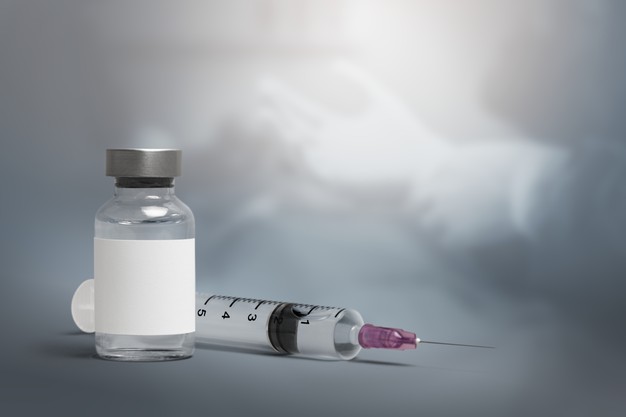

By Joachim Ng
It is common to blame COVID-19 anti-vaxxers for the unsatisfactory number of vaccination registrants, standing at just a quarter of Malaysia’s 33 million people. Perak occupies a low sixth place from the bottom in the registration list, despite reporting the highest number of infected cases in the country for one day early this month.
But the anti-vaxxers actually have a negligible influence. What’s holding back most people is the fear of side effects. No, they are not worried about the needle jab pain, the soreness, the mild headache, the fatigue, or the temporary loss of arm use. All these light effects are run-of-the-mill stuff to be expected.
It’s the risk of encountering life-threatening side effects that worries the hesitant ones. At the beginning of the year, 29 people in Norway died after receiving the Pfizer vaccine. Regrettably, Malaysians could only get detailed information by reading foreign journals. European health officials quickly identified the risk group as elderly people with serious underlying health conditions.
This helped European nations to exclude the ones at risk and carry on vaccinating the rest. Public confidence in the Pfizer vaccine wasn’t affected because European governments were honest and forthright in their communication.
Lately, the spotlight is shining on the AstraZeneca vaccine. Here again, we must heap praise on the European Union and British governments for keeping their citizens well informed and updated on the latest bad news. And once again, Malaysians have to depend on foreign journals and foreign government websites for honest information.
Early last month, reports emerged of very rare cases of blood clots in people who had received the AstraZeneca shot. About 250 recipients in Britain, European Union, and some parts of Asia developed brain blood clotting disorder. Twenty-two died, according to a New York Times story on April 7, the same day that the European Medicines Agency (EMA) confirmed a possible link to the AstraZeneca vaccine.
Although both the EMA and the World Health Organisation maintain that the benefits outweigh the risks of the vaccine, their arguments are not convincing and many governments have taken precautionary measures to safeguard those at risk.
Young people have been identified as a risk group and hence Britain, home of the AstraZeneca vaccine, is steering people below the age of 30 towards other vaccines. Germany will restrict the AstraZeneca jab to those aged above 60. Australia, which had earlier placed no restrictions on its use, now recommends that adults under 50 receive an alternative vaccine. Denmark and Norway have suspended its use altogether.
Malaysia could do a flip as well. On April 6, the Ministry of Health announced that the country would proceed with using the AstraZeneca vaccine after deciding that the benefits far outweigh the negatives. Three days later on April 9, the Science, Technology and Innovation Ministry said the country would review the decision following the EMA announcement on April 7. As of April 13, there is still no review.
South Korea has also limited the use of AstraZeneca to people aged 30 and above — same as in Britain. You must read the statement by the Korea Disease Control and Prevention Agency where it refutes the WHO line and, on the contrary, affirms that the benefits do not outweigh the risk for that age group.
You need to know that the “benefits far outweigh the negatives” line is based on wrong statistical modelling used by the EMA and WHO. It sounds reassuring that only one in a million jab recipients will die from blood clotting. But it is not all reassuring.
Imagine that you are a soldier with orders to walk across a large rice field in a straight line. There is an explosive buried at one spot somewhere and if you step on it you get blown up. What is your risk level? 1 in 1? If you are one of 10,000 soldiers at the starting line and all are walking straight across the field, has your risk level dropped to 1 in 10,000? Absolutely not, even though only one soldier in 10,000 will get blown up. What if there are a million soldiers walking across the field? Your risk level stays exactly the same as when you walk alone.
Your risk level when it comes to the vaccines is determined solely by your own body mechanism. In statistics, you look at numbers for comparison — only one casualty out of a million and you conclude that it’s negligible. But what if you’re that one, or a family member of that one? It’s a big deal. This is where a human life may get blown up by the wrong use of statistics. You don’t sacrifice one life so that a million others can be saved, if there are viable alternatives.
Choose a vaccine that doesn’t endanger your life, given your own risk profile. This is why Malaysia is on the right track in deciding that persons aged 60 and above will get the Sinovac instead of Pfizer. With half a dozen vaccines now available on order, it has become easy to select a vaccine in accordance with each person’s risk profile.
Another statistical model is the claim by some health authorities that your chances of getting the COVID-19 infection is higher than your chance of getting a blood clot from a vaccine jab even if you are in a high-risk group. Hence, any vaccine is okay regardless of your risk profile. This is another wrong statistical model in use. Here’s why.
You cannot alter the factors in your risk profile in one day. But you can alter your lifestyle in a day. Avoid being in crowds, don a face mask when you’re outside, don’t let another person come within 2 metres of you, and keep sanitising your hands. Your risk of getting infected will drop significantly, although not completely. You still need a jab, but get the right one that fits your profile.
The reality is that except for a small fraction of anti-vaxxers, every Malaysian prefers vaccination. But many hesitated because there was lack of clarity and information on possible life-threatening side effects and, until lately, an absence of choice. In Europe, governments long ago realised the folly of brushing aside the worries of the people as this would breed distrust and hesitancy.
Malaysia has done the smart thing in quickly putting Sinovac on the tray, along with Pfizer. The next step is to allow private hospitals to display a cafeteria choice of vaccines to suit each person’s risk profile. This will come with a bill, of course.



Please, please get the vaccination when it is offered to you. I live in the UK and we are lucky to have had an excellent vaccination programme. The risk of side effects is minimal and we must get it to rid the world of this horrendous vaccine!!! I have had both mine and there was no problem at all.